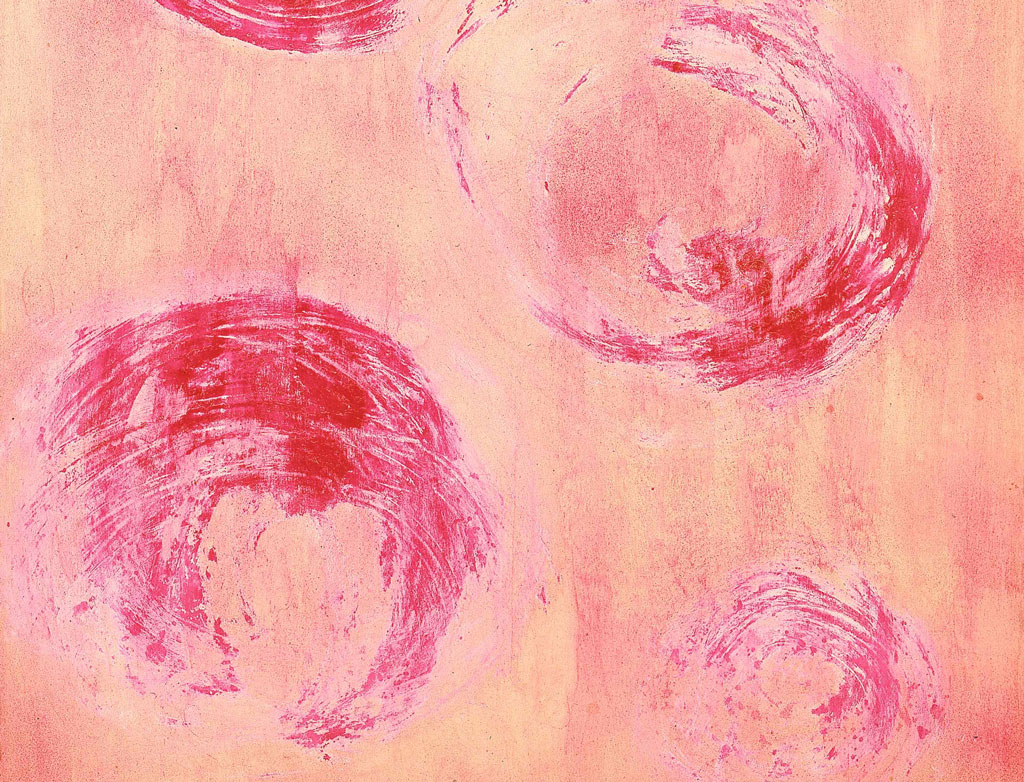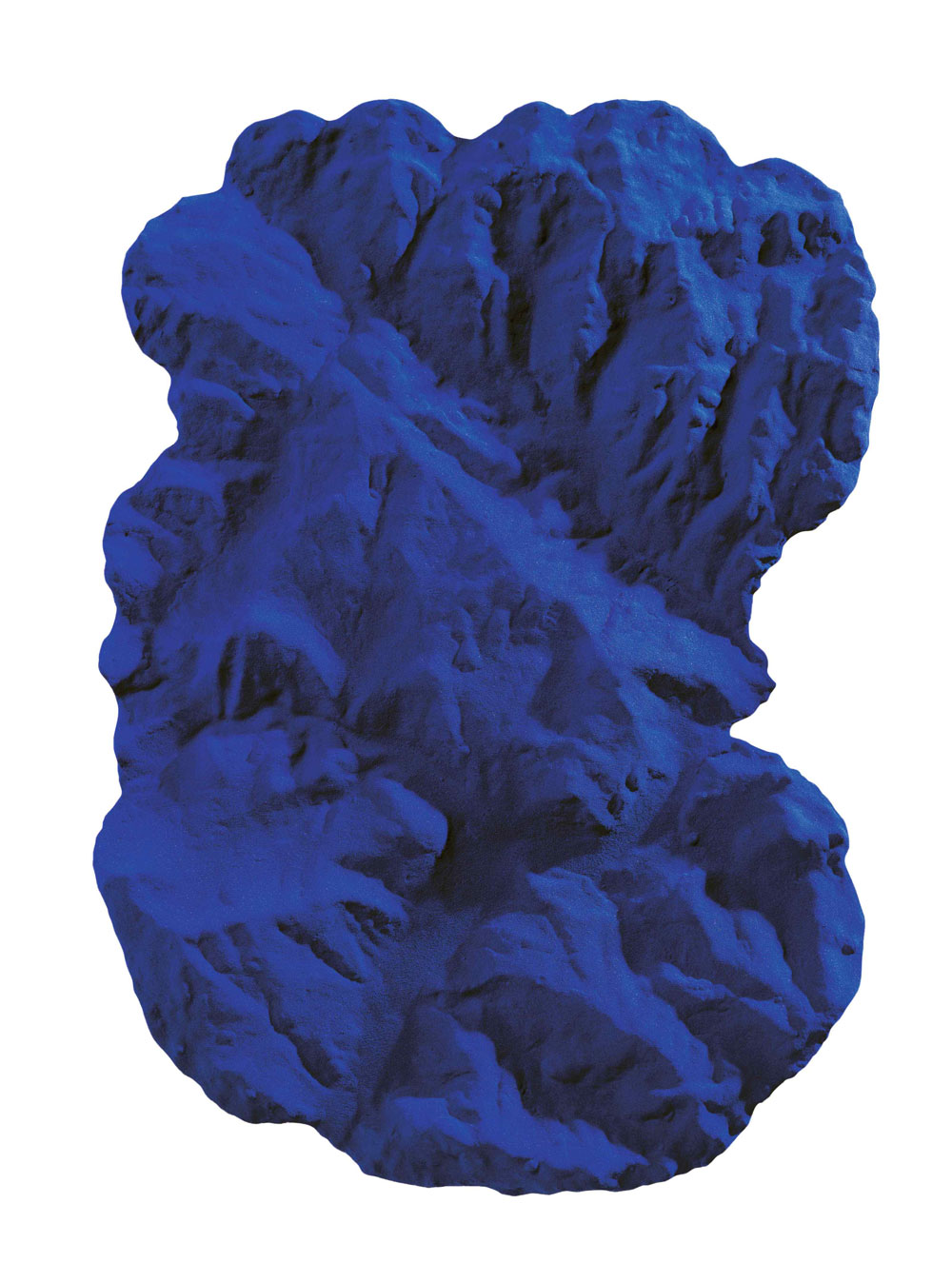ART-PRESENTATION:Yves Klein-Des Cris Bleus
 Yves Klein was the most influential, prominent, and controversial French artist to emerge in the 1950s. He is remembered above all for his use of a single color, the rich shade of ultramarine that he made his own: International Klein Blue. But the success of his sadly short-lived career lay in attacking many of the ideas that underpinned the abstract painting that had been dominant in France since the end of the World War II .
Yves Klein was the most influential, prominent, and controversial French artist to emerge in the 1950s. He is remembered above all for his use of a single color, the rich shade of ultramarine that he made his own: International Klein Blue. But the success of his sadly short-lived career lay in attacking many of the ideas that underpinned the abstract painting that had been dominant in France since the end of the World War II .
By Efi Michalarou
Photo: Soulages Museum Archive
“Yves Klein – Des Cris Bleus“ at the Soulages Museum in Rodez, France, is a retrospective of some 50 artworks among more than 1500 paintings by Yves Klein: Monochromes, Reliefs sponges, Fire paintings, Sculptures sponges, Anthropometries , Portraits reliefs, Earth Globes, Cosmogonies, Obelisks, Exvotos, Monogolds … The exhibition is completed by videograms, photographs, transaction documents designed by the painter with his collectors, books … The presentation is also related to collaborations with the sculptor Jean Tinguely and Claude Parent, forming the beginning of a chronological journey from ingenious inventions, an umbilicus in a way: “Pneumatic rocket”, “Architecture of the air”, “Fountains of Warsaw” and “Excavator of space”. Yves Klein was born on April 28, 1928, in Nice, France. Between 1942 and 1946, Klein studied at the Ecole Nationale de la Marine Marchand and the Ecole Nationale des Langues. During this time he became close friends with a young poet named Claude Pascal and a promising sculptor named Arman Fernandez. Together they shared common interests of judo, jazz music, esoteric literature, and Eastern religions. Klein’s major artistic breakthrough occurred in 1947 while lying on a beach with Pascal and Arman, there the three friends divided the universe between themselves: Arman claimed the materiality of the earth, Pascal appropriated language and words, and Klein possessed “the void,” or the planet empty of all matter. Klein embarked on a “realistic-imaginative” daydream into the depths of the universe, where he claimed to have inscribed his name in the sky. The symbolic gesture was a flashpoint in Klein’s artistic pursuit to grapple with what he defined as the infinite. In 1949, he created The “Monotone-Silence Symphony”, a piece containing a single chord sustained for twenty minutes followed by twenty minutes of meditative silence. The composition symbolized the sound pitch emitted from the monochrome blue sky (or “the void”), emphasizing universal harmony. He lived in London with Pascal from 1948 to 1952, where he began to assist in the London frame shop of Robert Savage, learning gilding and basic painting techniques using raw pigments. In 1953, Klein traveled to Japan where he received a black belt in judo at the Kodokan Institute in Tokyo. There, he had a second private exhibition of monochromatic paintings and proclaimed “The Manifesto of the Monochrome” in which he declared monochrome to be an “open window to freedom, as the possibility of being immersed in the immeasurable existence of color”. Klein was determined to evoke emotions and sensations independent of line, rendered objects, or abstracted symbols, believing the monochromatic surface released the painting from materiality through the totality of pure pigment. In 1956, Klein established himself in the Paris art scene with a controversial exhibition at the Galerie Colette Allendy titled “Yves: Propositions Monochromes”. 20 monochromatic paintings were displayed, rendered in tones of blue, red, yellow, and orange. Klein received a disappointing reaction from the public, who viewed the exhibition as a new form of interior abstraction rather than an infinite journey into the immateriality of the surface. But Pierre Restany, an emerging French critic, immediately understood the sublime power of Klein’s monochrome and supported him in expressing his viewpoint. After considering the public’s misinterpretation at the Galerie Colette Allendy, Klein decided to push the monochrome a step further by focusing on his favorite color, blue. In 1956, with the assistance of a chemical technician, Klein succeeded in suspending his favorite ultramarine pigment in petroleum extracts, which allowed the pigment to maintain its brilliance and something of its powdery texture without dulling. He named the substance International Klein Blue (IKB). This marked the beginning of Klein’s Blue Period, in which he produced several monochromatic paintings in the signature color, titling each International Klein Blue, combined with a serial number. Klein believed IKB was the perfect instrument with which to elaborate his belief in spiritual powers and the immaterial; ultramarine is the traditional symbolic color of the Holy Ghost in Christian religion and also evokes the expanse of the infinite sky and the depth of the oceans. In 1957, Klein exhibited 11 evenly spaced, vibrant IKB paintings at the Gallery Apollinaire in Milan, one of which was bought by the Italian artist Lucio Fontana. The paintings were displayed on poles, identical in size and structure but each bearing a different price, something that for Klein suggested the irrelevance of the material objects themselves and the importance instead of the viewer’s response. Klein took the concept of the immaterial a step further when he removed everything with the exception of an oversized cabinet from the Iris Clert Gallery. In 1960, Klein renounced personal attachment to the picture plane by applying IKB with paint rollers and female models in a series dubbed the “Anthropométries” the first of which was exhibited as a performance piece at the Galerie Internationale d’Art Contemporain in Paris. Nude female models slathered themselves in IKB and pressed their bodies against the gallery walls to create imprints. During this time, Klein became increasingly fascinated with natural elements and would incorporate fire, water, sea sponges, and gravel into his canvases and sculptures. This resulted in a series of fire paintings, monochromatic relief paintings, and IKB sculptures that expressed cosmological ideas of infinite space. Klein received a poor response after he exhibited at the Leo Castelli Gallery in New York in 1961, where his paintings failed to sell, and he responded with the “Chelsea Hotel Manifesto” (1961) in which he explained his ideas. In 1962, he married artist Rotraut Uecker, which was several months before he died of a heart attack at the terribly young age of 34.
Info: Soulages Museum, Jardin du Foirail, avenue Victor Hugo, Rodez, Duration: 21/6-3/11/19, Days & Hours: Tue-Fri 10:00-13:00 & 14:00-18:0, Sat-Sun 10:00-18:00 or Mon-Sun 10:00-18:00, https://musee-soulages.rodezagglo.fr






